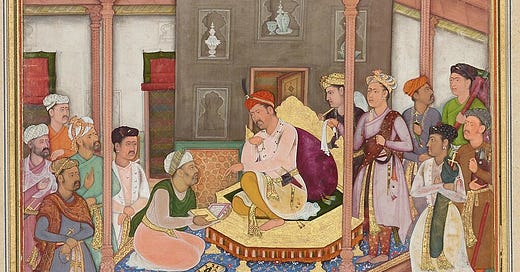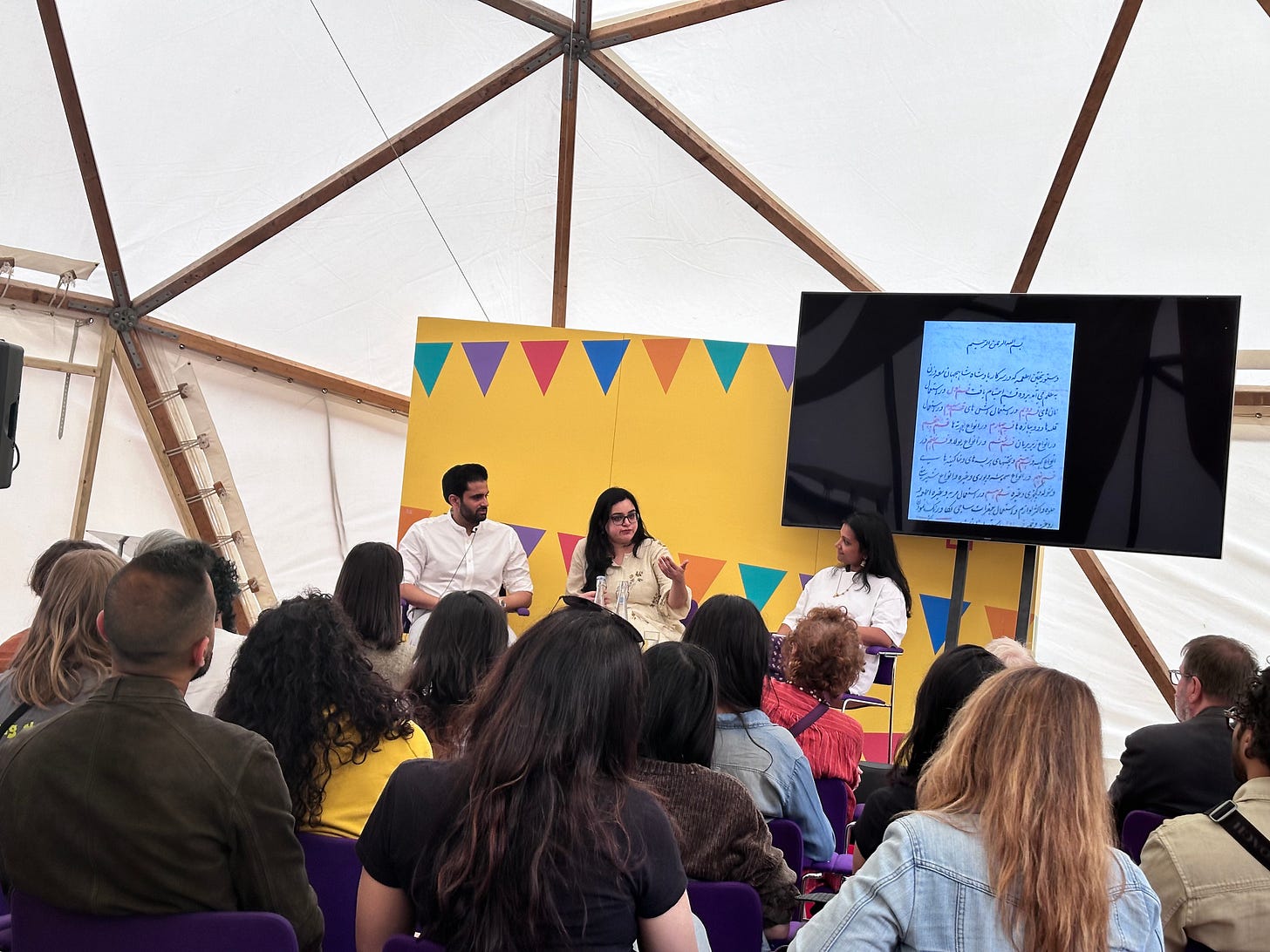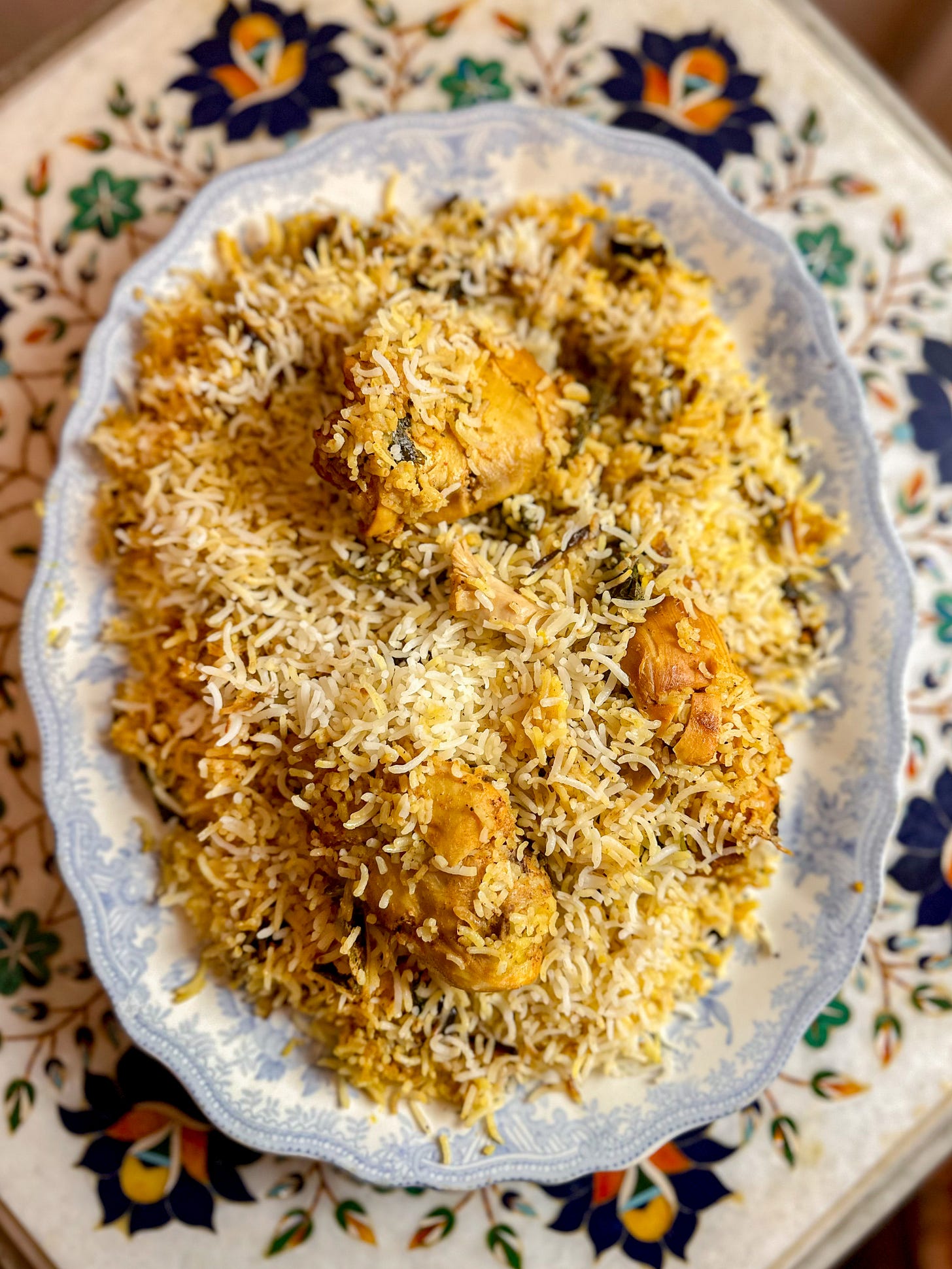The event “Reimagining Mughal Culinary Scripts” during the Food Season at the British Library last week was like a feast for my foodie soul. It was set up as a conversation between Neha Vermani, a historian of food consumption and culinary practices in South Asia, and Chet Sharma, chef-patron of Bibi restaurant which serves modern Indian food inspired by his heritage. The discussion was beautifully moderated by Cynthia Shanmugalingam who runs the Sri Lankan restaurant Rambutan and also has a book with the same title.
Having become a self-taught student of Indian food history in recent years this was just the kind of session I wanted to attend. We were first treated to a taster of spicy rice pulao and meatball kofta from Chet’s team based on historical recipes from different eras of Mughal rule. There was also a Badam Shorba (or almond soup) for us to try at the end. This was a novel and very welcome feature of this year’s food season, giving us a sensory introduction to the topic.
The Mughals ruled large parts of present-day India, Pakistan and Bangladesh from 1527 to 1707. The first Mughal emperor to establish his throne in Delhi was Babur who belonged to the Timurid dynasty of Turco-Mongols from Central Asia and was a descendant of Timur and Genghis Khan. It was this Mongol connection that led to the name Moghul. Although Indian food had already evolved under the Afghan Sultanate, it developed substantially under the Mughals. This happened in several ways. Babur, established fruit orchards and his chefs incorporated a variety of fruits in their cooking. His son, Humayun had close links with Persia which led to the exchange of ideas and the development of new ways of cooking in the royal kitchens. Mughlai kitchens also absorbed local Hindu influences through intermarriages with the Rajputs of Rajasthan. One of the wives of Mughal emperor Akbar was a Hindu.
Neha reminded us that the Mughals also changed after coming to India with successive generations and the use of the undifferentiated term, “the Mughals”, doesn’t say much about who they were and what they brought to Indian food. Neha’s particular interest is in the history of food consumption and affect which I was keen to learn more about. She gave us a fascinating account of how Mughal books like Akbarnama, Shahajahannama, and associated texts describe the etiquette of eating and how masculinity was associated with more refined behaviour.
What irked me a little was how feminity was equated to inferiority. But according to Neha it was not that simple; highly skilled Mughal women like Nur Jahan, known for her governance and hunting skills were able to transcend the gender divide and command respect from men. I did wonder if class mattered though as it would have been much harder for a woman from a more humble background to achieve that kind of standing in a male-dominated society. So there was probably a class and gender dimension to ideas of being refined and cultured during the Mughal era.
Neha also talked about the changing taste of Mughlai food which was much sweeter earlier, with added fruits - the Badam Shorba that we tasted was sweet/savoury, quite unlike the Mughlai shorts of today.
Inevitably, the hotly debated topic of Biryani came up. It has been speculated that the name biryani has been derived either from the Persian term for rice “birinj”, or fried meat “biriyan” but their connection to Biryani has been questioned. There are many theories of the origin of Biryani with some scholars of Mughlai cuisine like Salma Hussain claiming that it travelled to India from Persia with the Mughals while others like Pushpesh Pant arguing that it predates the Mughals and came with soldier-statesmen and pilgrims to South India. Pratibha Karan, one of the authorities on biryani in India, questions its Persian origins altogether and suggests that it evolved independently in India from the pulaos of West and Central Asia. She says that the idea that biryani trickled down to the south from royal Mughal kitchens is nonsense as there are so many kinds of biryanis all across south India that most likely arrived through Arab traders and others long before the Mughals and were incorporated into the everyday cooking of ordinary folk. It appears that biryani did not make an appearance in Mughal cookbooks until the 18th century.
Whatever the origin, Neha said that the difference between biryanis and pulaos is often blurred and overstated. There is no doubt that pulaos predated biryanis and they are much more diverse - at least 120 varieties are known. She also busted the myth about there being no such thing as a vegetarian biryani as there are recipes for vegetarian biryanis in Mughal cookbooks that are made with the Indian cheese paneer. The origin of paneer is also much debated and I will devote another post to that!
A Saturday well spent.






